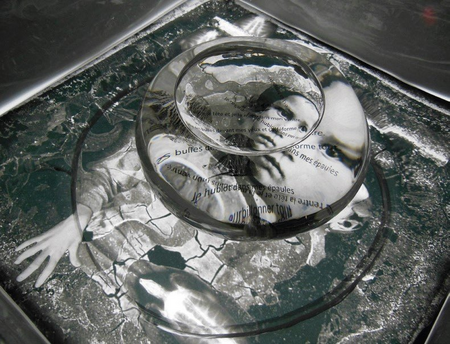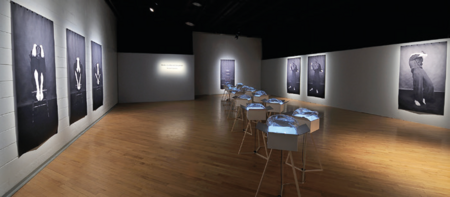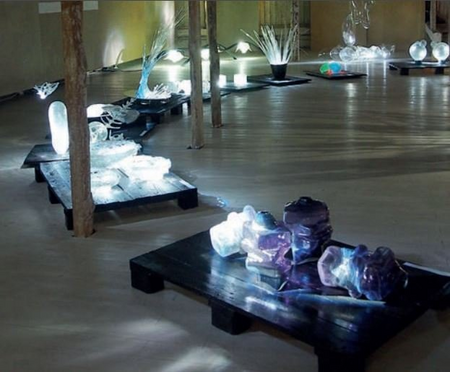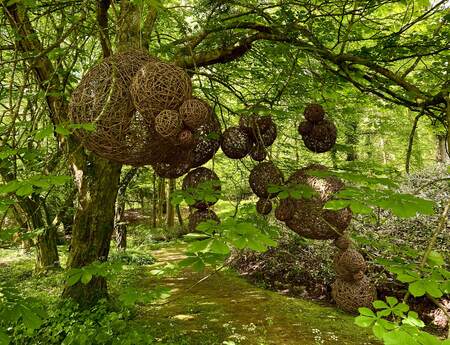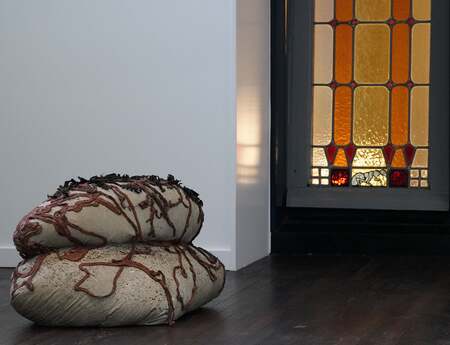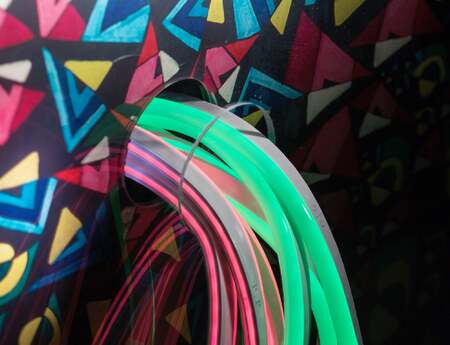Michèle Lapointe - Public inner space
The artist Michèle Lapointe lives and works in Montreal. Although she works with various media, she has been focusing on glass since the 1980s.
In the area of public art commissions as well as in gallery installations, she deals with issues such as the transience of time, the memory of a particular place, and the fragility of our environment. She holds a professorship at Espace Verre, the only glass craft school in Canada. One of the country‘s most prestigious arts and crafts awards is the Prix Jean-Marie-Gauvreau. Connected to a $ 10,000 grant, the Quebec Arts Council has been awarding this prize annually since 1976 for a work that boldly explores the limits of a skilled artisan‘s favourite material.
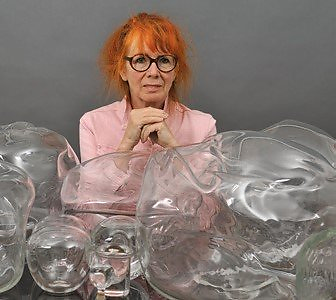
Michèle Lapointe is the winner of the Prix Jean-Marie-Gauvreau 2018. She received it for her work „Mettre la tête où l‘on pense“ (roughly: Send your head to where you think). The mixed media installation interprets the novel „Carapace“ by Canadian author Mario Girard, alias Marie Auger, which tells of the loneliness, delusion and speechlessness of a homeless street musician.
Crumpled glass balloons sink halfway into thirteen cardboard boxes on thin wooden legs. They divide the gently lit exhibition space diagonally. In each of the boxes, backlit photomontages, text pieces and selected objects are partially exposed, optically enlarged or amorphously deformed by prisms, mirrors, and freely blown glass elements. Mainly, doll-like girls are depicted, sometimes sitting on a chair. Large-format black-and-white photographs of a young woman frame the installation on the walls. In seven virtually dance-like poses, she hides her face behind her hair or behind her arms; four times she sits in the same chair as the children. In addition, the orphaned chair itself can be seen in an eighth picture.
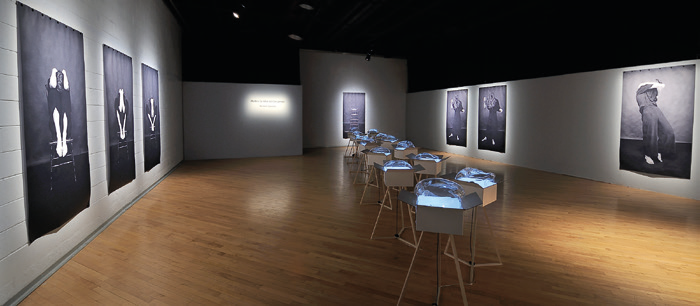
photos on wall 182 x 106 cm. (Photo credit: René Rioux)
For all readers of Auger‘s novel, individual components of the artwork refer to the plot literally, such as the cartons do to the accommodation of the homeless musician, a refrigerator packaging. Like the other elements however, the artist uses them primarily for their atmospheric effect. Lapointe interlaces the lightness and heaviness of the novel with the indeterminate qualities of glass, which is fragile as well as solid, transparent and distorting. Some effort must be made to find out what happens in each bubble of the boxes. Depending on the angle of view, the perspective on those depicted changes. The glass creates enclosed universes that invite the observer to pause, to examine his view, to look at the unsaid. Sometimes the montages disappear, then giving an idea of the children’s distress, renunciation or abuse.
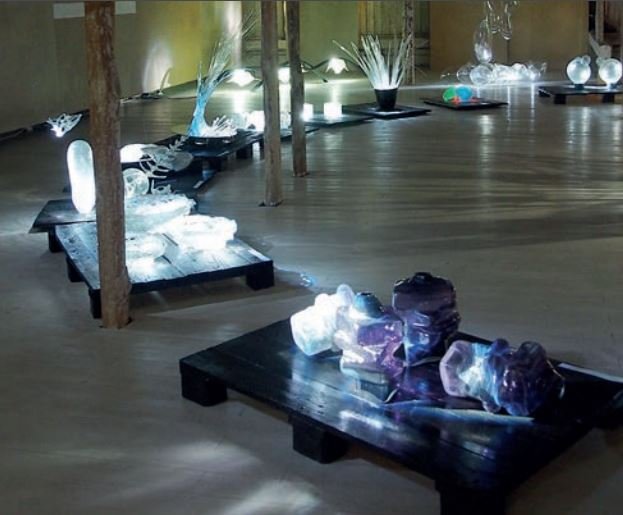
de Mont-Laurier, Kanada. (Foto: Julie Legault)
With „Mettre la tête où l‘on pense“, Michèle Lapointe created a place where visitors go on a search for clues. The installation authorises the immersion in a private sphere within the public gallery space. Lapointe has appropriated „Carapace“ and thus created a public inner space. The award-winning installation is on display until March 16, 2019 at Le Center d‘Exposition de Mont-Laurier CANADA.
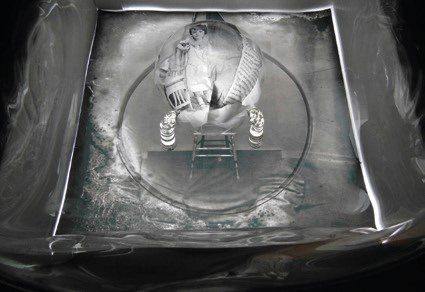
Author: Verena Wasmuth
Expert for glass art and design.
This article was published as part of our cooperation with GLASHAUS – Internationales Magazin für Studioglas 1/2019.
Cover picture: Michèle Lapointe, Installation „Mettre la tête où l’on pense“, 2018, Detail. (Photo credit: René Rioux)
